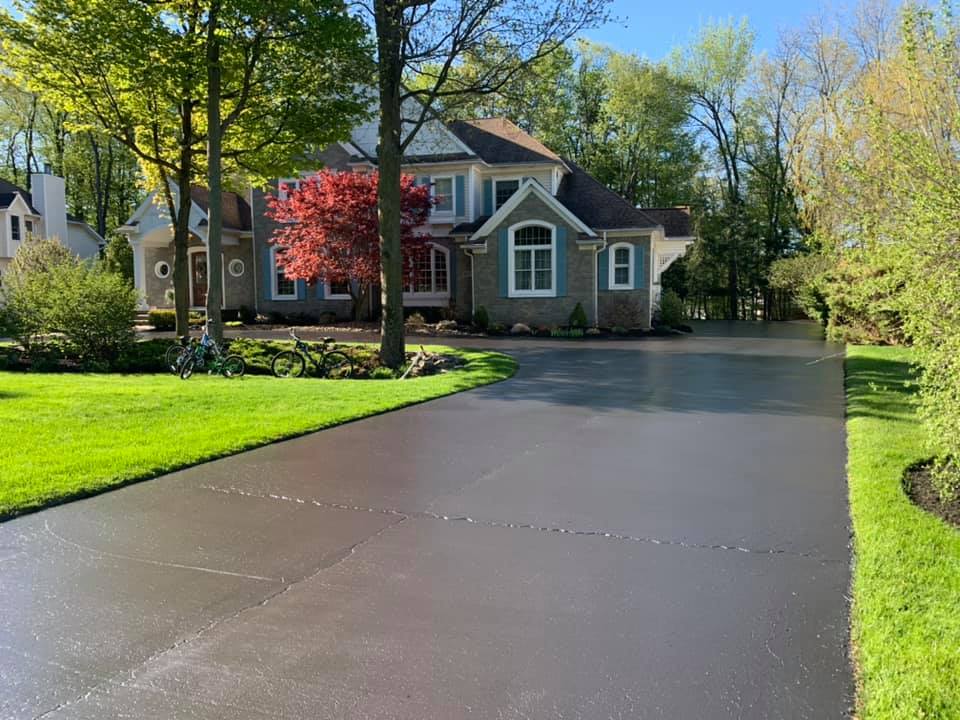Prolong Sidewalk Life Expectancy: Innovative Cold Mix Asphalt Sealing
Cold Mix Asphalt Vs. Hot Mix Asphalt: Which Is Right for You?

Make-up Differences
Cold mix and warm mix asphalts vary significantly in their make-up, with distinct attributes that affect their performance and applications. Cold mix asphalt is produced by emulsifying the asphalt binder with water and an emulsifying representative prior to mixing it with accumulation. This technique enables the asphalt to be practical at lower temperature levels, making it optimal for momentary repair services and for use in colder weather. Hot mix asphalt, on the other hand, is made at heats, usually in between 300-350 ° F, which aids to achieve better compaction and a much more long lasting end product. The warm mix asphalt manufacturing process involves heating up the accumulation and asphalt binder individually prior to combining them at the asphalt plant.
Additionally, cool mix asphalt often tends to be much less thick and a lot more adaptable than hot mix asphalt. This flexibility makes it better suited for areas with higher levels of movement, such as driveways or roadways with hefty traffic. On the other hand, hot mix asphalt is recognized for its high resilience and resistance to rutting and splitting, making it a recommended option for highways and high-traffic roads where durability is crucial.
Installation Refine Variations
The process of installing cool mix and hot mix asphalt displays remarkable variances in their procedures and demands. In comparison, warm mix asphalt requires an extra fancy installment process. Due to the heating needs, hot mix asphalt setups are typically lugged out by experts with specific tools, making sure a more long-term and structurally sound result.
Durability and Durability Factors
When taking into consideration asphalt options, toughness and long life are crucial factors to assess for long-term pavement efficiency,. Warm mix asphalt (HMA) is recognized for its phenomenal sturdiness and long life. The heats during the blending and laying process enable for far better compaction, causing a denser and stronger sidewalk framework. This leads to HMA being a lot more immune to heavy website traffic loads, extreme climate condition, and the see results old compared to chilly mix asphalt (CMA)
In regards to longevity, HMA typically outmatches CMA because of its premium stamina and resistance properties. HMA sidewalks have a longer service life, needing much less regular repair work and upkeep, which can translate to set you back savings in the lengthy run. Furthermore, HMA pavements are more quickly customizable to satisfy details project demands, additionally enhancing their sturdiness.
Cost Factors To Consider
Thinking about the monetary implications is an important facet when reviewing the selection in between hot mix asphalt (HMA) and cool mix asphalt (CMA) for sidewalk projects. While the first cost of warm mix asphalt is generally greater than that of cool mix asphalt, HMA typically offers an extra cost-effective solution in the long run due to its superior sturdiness and long life.
In enhancement to material costs, it's vital to think about the expenses related to installment and maintenance when contrasting HMA and CMA. HMA typically needs specific devices and experienced labor for proper installment, which can affect total project costs. Alternatively, CMA is less complicated to deal with and can usually be used making use of simpler techniques, potentially lowering installation expenses. Eventually, the decision between HMA and CMA ought to take into account not just the preliminary expense yet also the long-lasting financial implications to determine the most economical choice for the specific pavement task.
Environmental Effect Comparison
Contrast of look at this now the ecological influences in between warm mix asphalt (HMA) and chilly mix asphalt (CMA) discloses distinct distinctions in sustainability methods. HMA manufacturing needs high temperatures, leading to increased power consumption and greenhouse gas emissions.
Additionally, using CMA often entails reusing existing asphalt sidewalk, promoting source preservation and lowering the quantity of waste sent out to landfills. This reusing facet additionally enhances the sustainability of CMA contrasted to HMA. In general, when thinking about the ecological influence, CMA becomes a more ecologically lasting option because of its lower power requirements, decreased exhausts, and the capacity for reusing existing materials. By choosing CMA over HMA, roadway building and construction tasks can add favorably to environmental conservation efforts.
Final Thought
In conclusion, the investigate this site choice between cool mix asphalt (CMA) and warm mix asphalt (HMA) depends on numerous variables such as structure, setup process, resilience, long life, cost, and environmental effect. cold mix asphalt. While CMA supplies a cost-effective and fast solution for small repairs, HMA ensures premium longevity and longevity for rush hour locations. Consider these elements meticulously to determine which type of asphalt is the best selection for your paving requires

Taking into consideration the financial effects is a critical facet when evaluating the option in between warm mix asphalt (HMA) and cool mix asphalt (CMA) for pavement jobs. While the first cost of hot mix asphalt is normally higher than that of cold mix asphalt, HMA typically offers an extra affordable option in the lengthy run due to its exceptional longevity and durability. angle parking.Contrast of the ecological impacts between hot mix asphalt (HMA) and cold mix asphalt (CMA) exposes distinctive distinctions in sustainability practices.In conclusion, the option in between cold mix asphalt (CMA) and hot mix asphalt (HMA) depends on various elements such as structure, installment process, sturdiness, durability, expense, and ecological effect